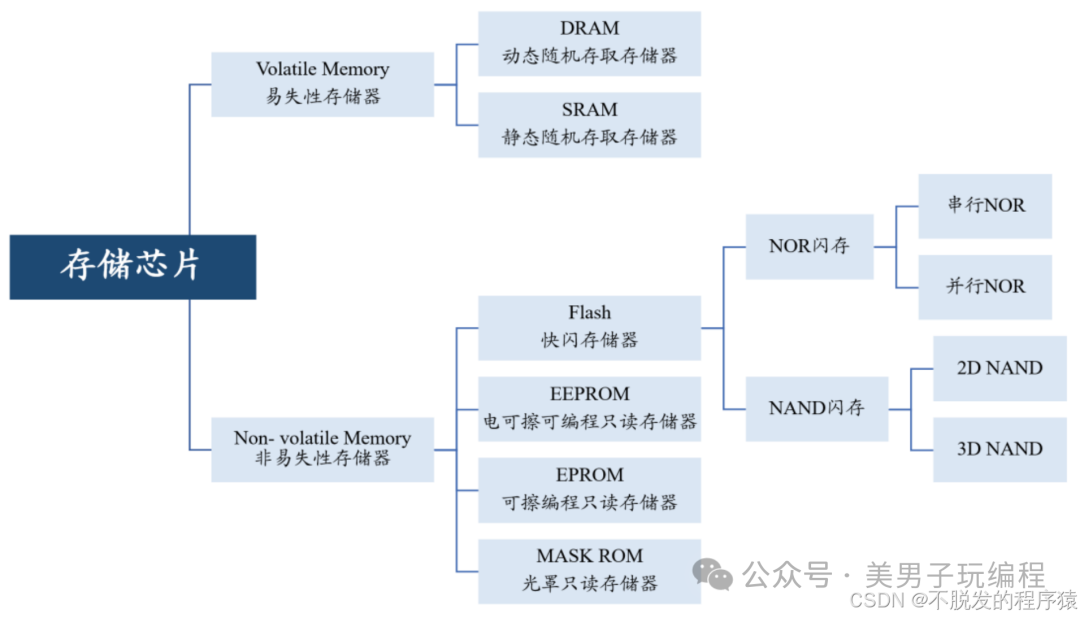
Click on the aboveblue text to follow us
Flash memory has a wide range of applications in embedded systems, especially in scenarios requiring large-capacity non-volatile storage, such as firmware storage, logging, and data backup. However, due to the physical characteristics of Flash, it faces the risk of failure after a limited number of erase-write cycles.
Flash storage is mainly divided into NAND Flash and NOR Flash, which differ in structure and application scenarios:
- NAND Flash: High density, low cost, suitable for data storage, such as eMMC, UFS, etc.
- NOR Flash: Fast read speed, suitable for code storage and execution, such as firmware and Bootloader.

The lifetime of Flash is mainly determined by the erase-write cycles (P/E Cycle). After a limited number of erase-write operations, each storage block may experience unrecoverable write errors, manifested as bit flips, data loss, etc.
The goal of lifetime prediction is to assess the remaining usable cycles of Flash based on its current usage state. Common methods include:
- Estimation based on erase-write counts: Counting the number of erase-write operations for each block and comparing it with the maximum erase-write count.
- Prediction based on Bit Error Rate (BER): Regularly reading and verifying data to estimate lifetime based on the trend of BER changes.
- Prediction based on failure models: Constructing specific failure models and predicting remaining lifetime based on actual working conditions of the device.
The goal of monitoring methods is to obtain the health status of Flash in real-time, allowing for measures to be taken when the lifetime approaches its end.
- Bad Block Management (BBM): Detecting and marking bad blocks, redirecting data.
- Wear Leveling: Balancing the erase-write counts of each block to extend overall lifetime.
- ECC Verification and Correction: Using Error Correction Code (ECC) to fix errors caused by erase-write operations.
Below is an example of Flash lifetime prediction code based on erase-write counts.
#define MAX_PE_CYCLES 10000
#define BLOCK_NUM 256
unsigned int wear_count[BLOCK_NUM] = {0};
void write_block(int block_id) {
if (wear_count[block_id] >= MAX_PE_CYCLES) {
printf("Block %d has reached the maximum erase-write count and needs to be replaced or marked as bad block.\n", block_id);
} else {
wear_count[block_id]++;
printf("Block %d has been written %d times.\n", block_id, wear_count[block_id]);
}
}
void check_flash_health() {
for (int i = 0; i < BLOCK_NUM; i++) {
if (wear_count[i] >= MAX_PE_CYCLES * 0.8) {
printf("Warning: The erase-write count of Block %d is approaching the lifetime limit.\n", i);
}
}
}
int main() {
for (int i = 0; i < 10050; i++) {
write_block(0);
}
check_flash_health();
return 0;
}This code simulates the erase-write operations of Flash blocks and performs simple monitoring and warning of the lifetime status.
Flash lifetime prediction and monitoring are important means to enhance the stability of embedded systems.
Through reasonable prediction and monitoring methods, the lifespan of Flash can be effectively extended, reducing the risk of data loss and system crashes.

 Clickto read the original text for more exciting content~
Clickto read the original text for more exciting content~